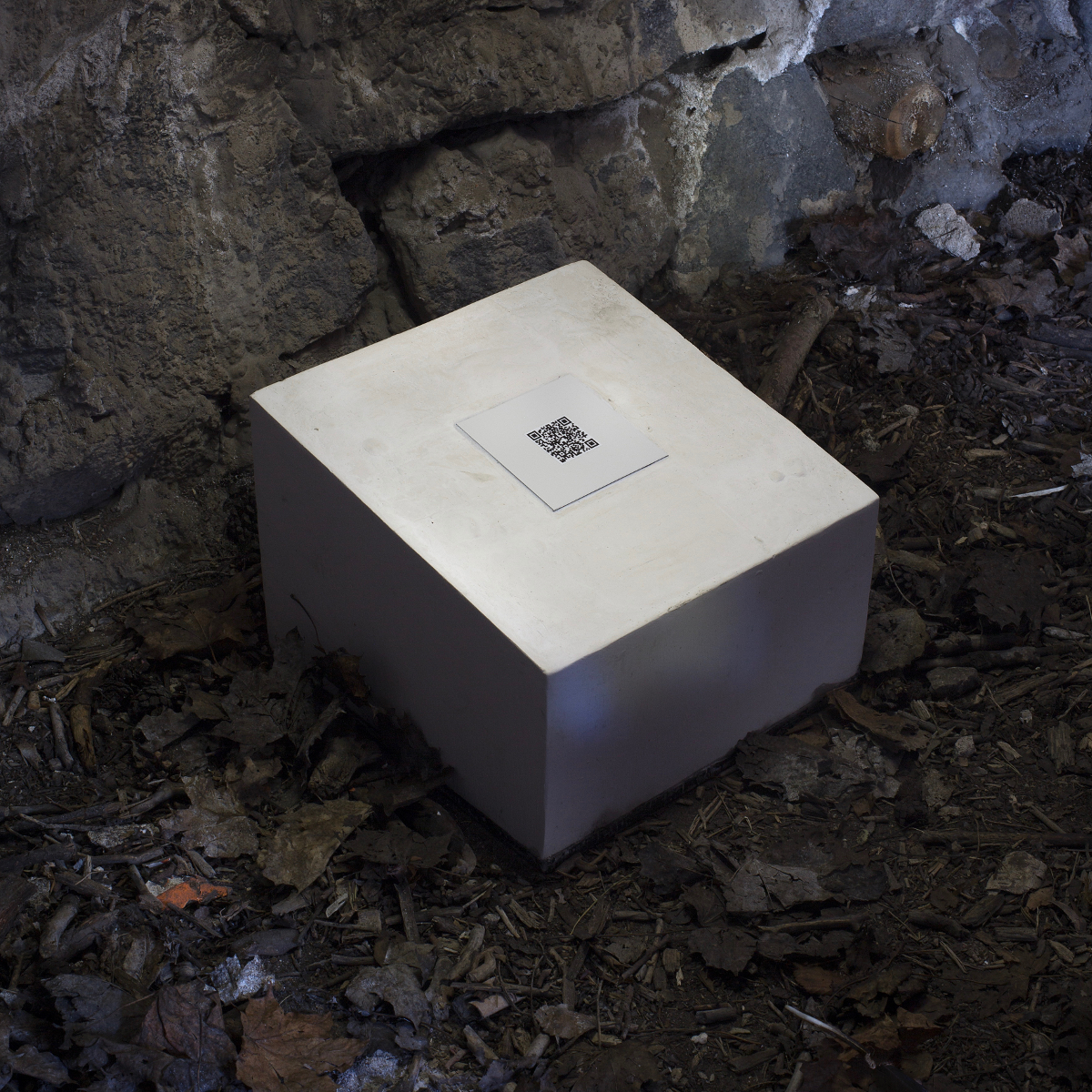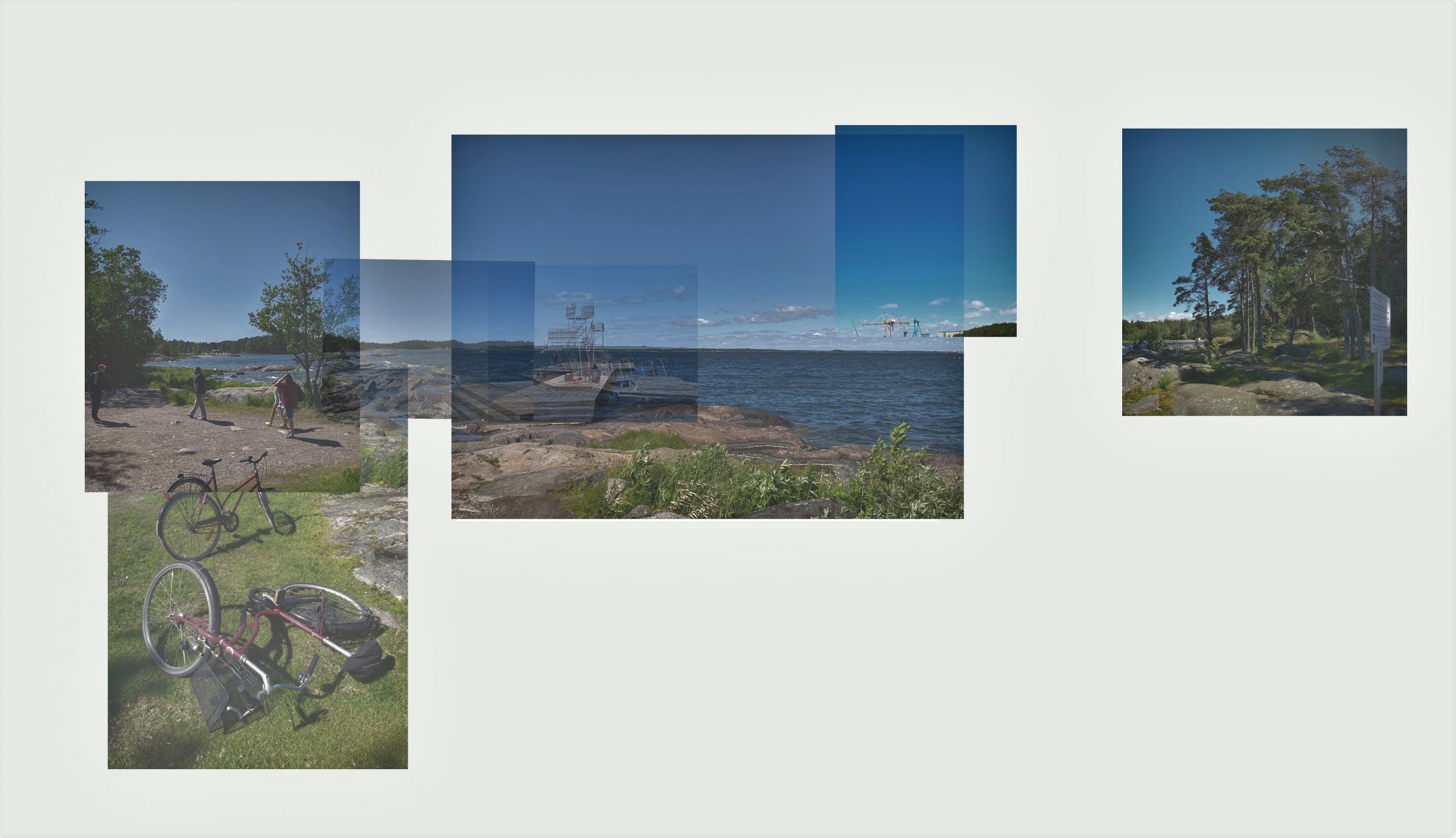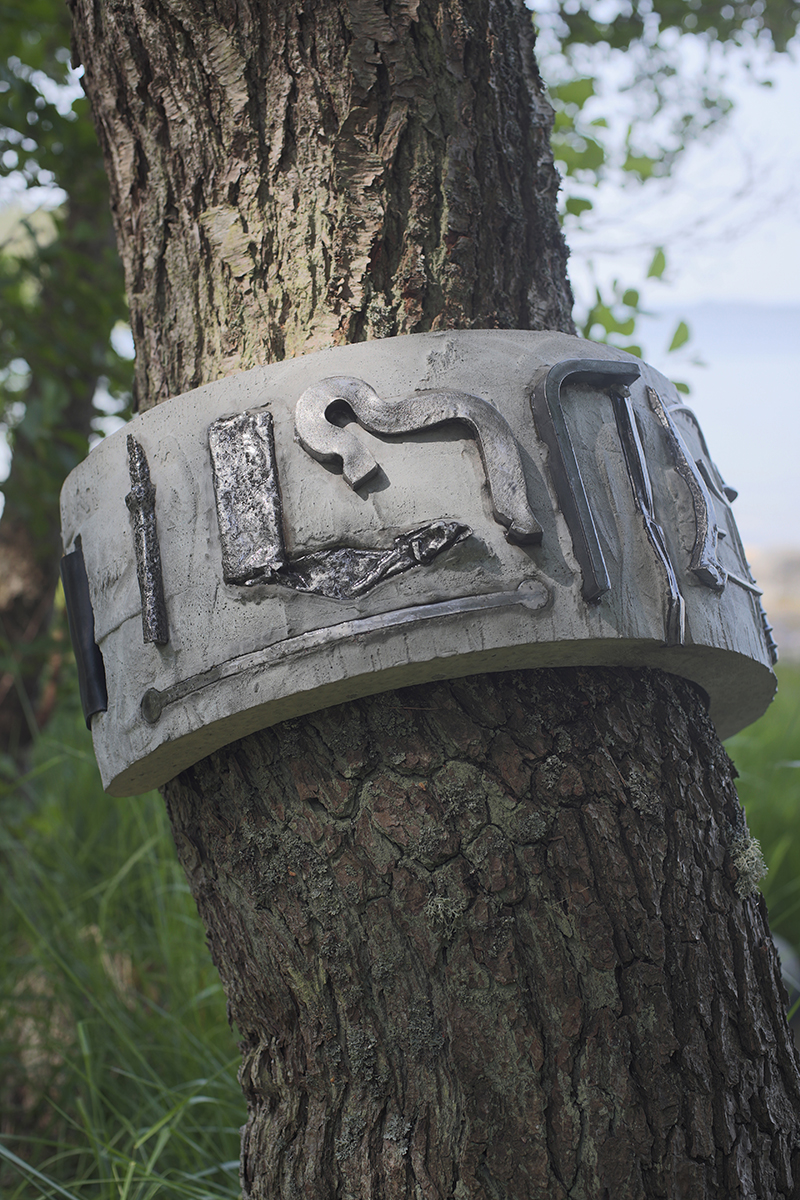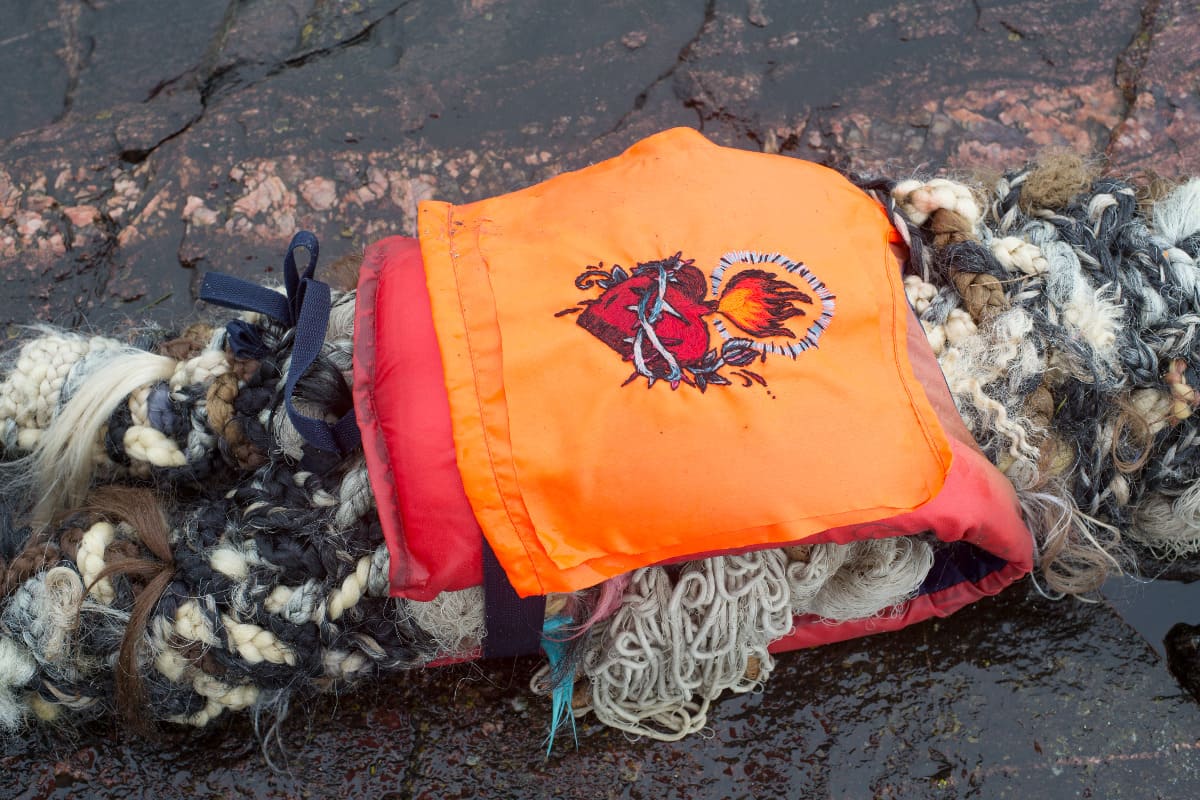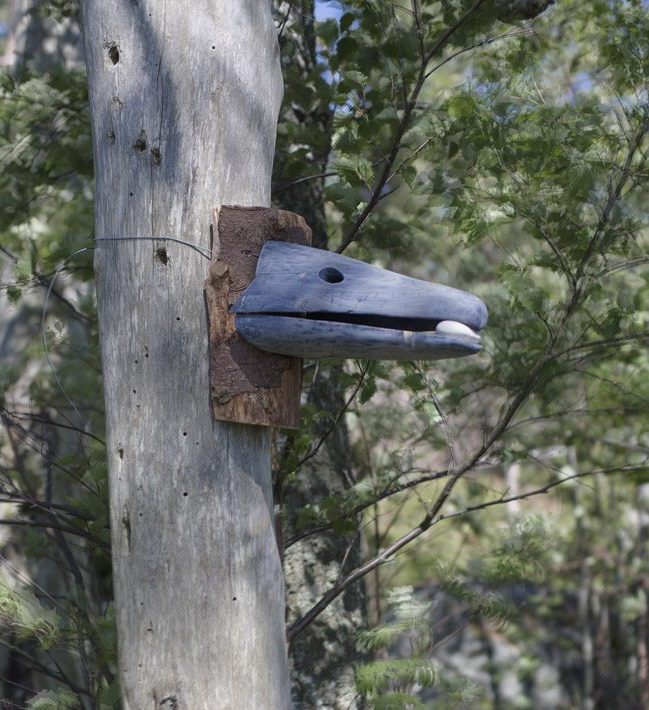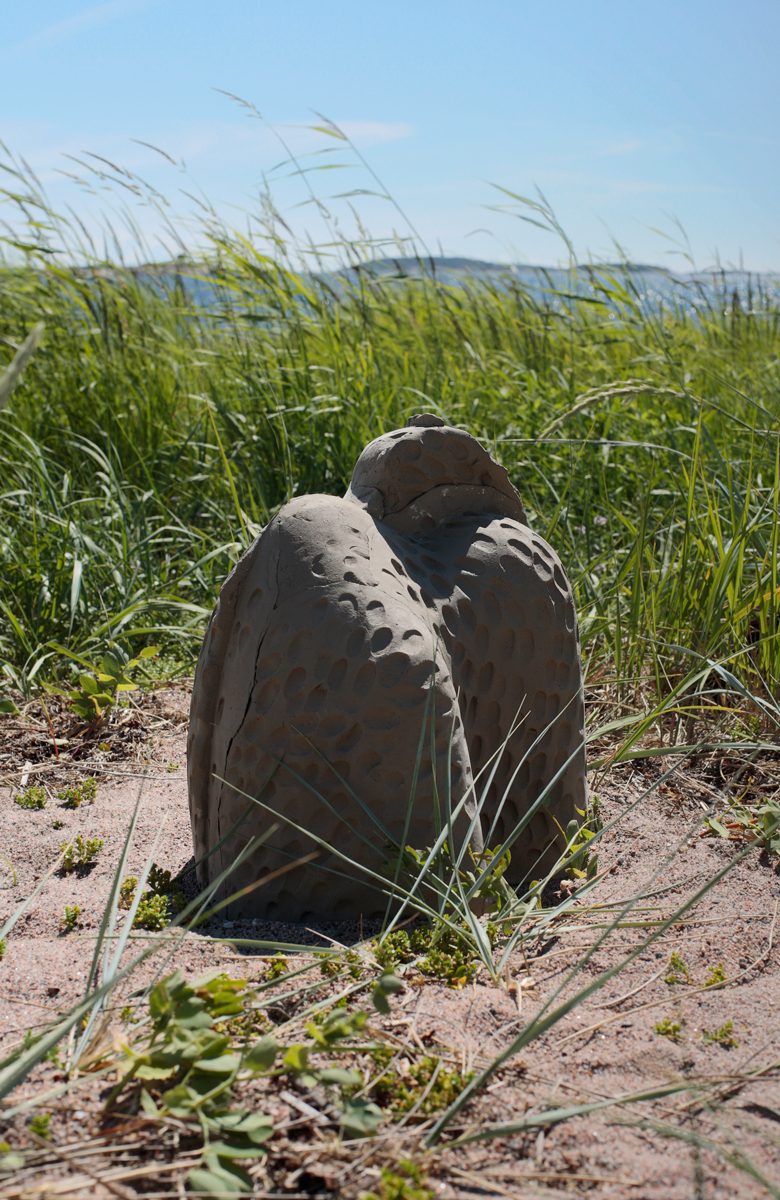Artpiece position
Let Harha mobile application guide you to the location
Guilt
Ida Koitila
On top of Puistovuori stands a wartime Russian built concrete bunker. From inside the bunker the horizon can be seen through a small and narrow crack and through another small opening a glimpse of woodland can be seen. Via a QR code a shadow version of the sculpture Guilt becomes visible. It has been there but is no longer present. In the photograph a thorn crown is hanging on the bunker wall. The thorns are only partly visible under soft curls of hair and white wax which has been dripping down onto the floor. The drips look like white fangs or tears of chalk.
Guilt deals with inner and outer landscapes and the tension between these two is explored via the concept of Ma, which in traditional Japanese art often refers to a concrete negative space in an image composition. But the word can also have another meaning, where the void exists only in the viewer’s mind.
Work in the bunker: Plaster, steel, QR- code.
Size: W: 30 cm H: 22/16 cm D: 30 cm.
Kuva: Sandra Kantanen
Hidden work: Barbed wire, synthetic hair, stearin, steel.
Size: W: 28 cm H: 43 cm D: 15 cm.
Photo: Perttu Saksa
By combining different visual languages, techniques and materials Koitila constructs multilayered narrations that oscillate between the ordinary and the exceptional, the personal and the public, the small and the large. Central themes are the human biological, intellectual and cultural evolution as well as metaphysical and religious phenomenons.
Ida Koitila (b.1983 Borås, Sweden) lives and works in Hanko. Since completing her studies at the Academy of Fine Arts, Helsinki, she has had several solo exhibitions and actively participated in group exhibitions both in Finland and abroad. Koitilas latest solo exhibition was shown at Sinne in Helsinki 2019. She is currently working on a public art work for the culture center New Fokus in Karjaa. She is also currently exhibiting her sculpture Earth (2017) for the fourth summer in a row at Skulptur in Pilane, Sweden. The work is now also owned by Pilane Heritage Museum.
© Coastline Sculpture Project
